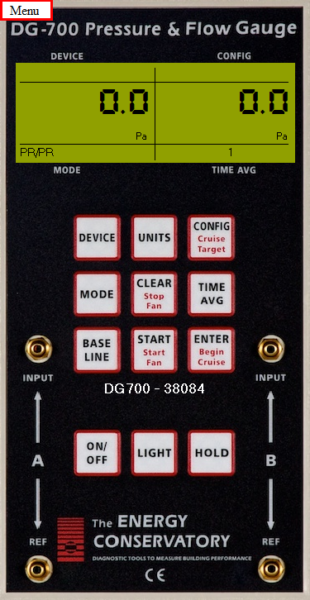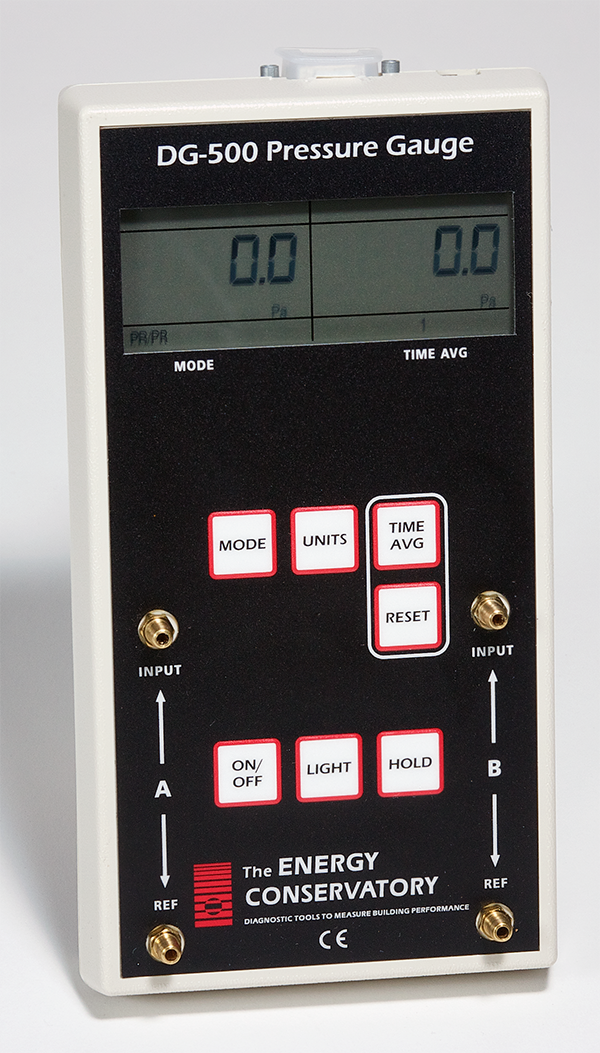- Drivers The Energy Conservatory Port Devices List
- Minneapolis Blower Door
- The Energy Conservatory Minneapolis
- Drivers The Energy Conservatory Port Devices Inc
See register 0x107. This data is processed by the driver. Adi,gc-low-power-thresh: gclowpowerthresh: This threshold is used by the fast AGC to determine if the gain should be increased. It can also be used to trigger a CTRLOUT signal transition in MGC mode. See register 0x114, bits D6:D0. This data is processed by the driver. Device ID Profile (DID 1.3) Hands-Free Profile (HFP 1.6) HID over GATT Profile (HOGP 1.0) Human Interface Device (HID 1.1) Message Access Profile (1.1) Object Push Profile (OPP 1.1) Personal Area Network Access Point (PAN NAP 1.0) Phone Book Access Profile (PBAP 1.1) Serial Port Profile (SPP 1.2) Windows 10 for desktop editions in-box Bluetooth.
In this topic, you will learn about how to select a configuration in a universal serial bus (USB) device.
To select a configuration for a USB device, the client driver for the device must choose at least one of the supported configurations and specify the alternate settings of each interface to use. The client driver packages those choices in a select-configuration request and sends the request to the Microsoft-provided USB driver stack, specifically the USB bus driver (USB hub PDO). The USB bus driver selects each interface in the specified configuration and sets up a communication channel, or pipe, to each endpoint within the interface. After the request completes, the client driver receives a handle for the selected configuration, and pipe handles for the endpoints that are defined in the active alternate setting for each interface. The client driver can then use the received handles to change configuration settings and to send I/O read and write requests to a particular endpoint.
A client driver sends a select-configuration request in a USB Request Block (URB) of the type URB_FUNCTION_SELECT_CONFIGURATION. The procedure in this topic describes how to use the USBD_SelectConfigUrbAllocateAndBuild routine to build that URB. The routine allocates memory for an URB, formats the URB for a select-configuration request, and returns the address of the URB to the client driver.

Alternately, you can allocate an URB structure and then format the URB manually or by calling the UsbBuildSelectConfigurationRequest macro.
Prerequisites

- In Windows 8, USBD_SelectConfigUrbAllocateAndBuild replaces USBD_CreateConfigurationRequestEx.
- Before sending a select-configuration request, you must have a USBD handle for your client driver's registration with the USB driver stack. To create a USBD handle call USBD_CreateHandle.
- Make sure you have obtained the configuration descriptor (USB_CONFIGURATION_DESCRIPTOR structure) of the configuration to select. Typically, you submit an URB of the type URB_FUNCTION_GET_DESCRIPTOR_FROM_DEVICE (see _URB_CONTROL_DESCRIPTOR_REQUEST) to retrieve information about device configuration. For more information, see USB Configuration Descriptors.
Instructions
Step 1: Create an array of USBD_INTERFACE_LIST_ENTRY structures.
Get the number of interfaces in the configuration. This information is contained in the bNumInterfaces member of the USB_CONFIGURATION_DESCRIPTOR structure.
Create an array of USBD_INTERFACE_LIST_ENTRY structures. The number of elements in the array must be one more than the number of interfaces. Initialize the array by calling RtlZeroMemory.
The client driver specifies alternate settings in each interface to enable, in the array of USBD_INTERFACE_LIST_ENTRY structures.
- The InterfaceDescriptor member of each structure points to the interface descriptor that contains the alternate setting.
- The Interface member of each structure points to an USBD_INTERFACE_INFORMATION structure that contains pipe information in its Pipes member. Pipes stores information about each endpoint defined in the alternate setting.
Obtain an interface descriptor for each interface (or its alternate setting) in the configuration. You can obtain those interface descriptors by calling USBD_ParseConfigurationDescriptorEx.
**About Function Drivers for a USB Composite Device: **
If the USB device is a composite device, the configuration is selected by the Microsoft-provided USB Generic Parent Driver (Usbccgp.sys). A client driver, which is one of the function drivers of the composite device, cannot change the configuration but the driver can still send a select-configuration request through Usbccgp.sys.
Before sending that request, the client driver must submit a URB_FUNCTION_GET_DESCRIPTOR_FROM_DEVICE request. In response, Usbccgp.sys retrieves a partial configuration descriptor that only contains interface descriptors and other descriptors that pertain to the specific function for which the client driver is loaded. The number of interfaces reported in the bNumInterfaces field of a partial configuration descriptor is less than the total number of interfaces defined for the entire USB composite device. In addition, in a partial configuration descriptor, an interface descriptor's bInterfaceNumber indicates the actual interface number relative to the entire device. For example, Usbccgp.sys might report a partial configuration descriptor with bNumInterfaces value of 2 and bInterfaceNumber value of 4 for the first interface. Note that the interface number is greater than the number of interfaces reported.
While enumerating interfaces in a partial configuration, avoid searching for interfaces by calculating interface numbers based on the number of interfaces. In the preceding example, if USBD_ParseConfigurationDescriptorEx is called in a loop that starts at zero, ends at
(bNumInterfaces - 1), and increments the interface index (specified in the InterfaceNumber parameter) in each iteration, the routine fails to get the correct interface. Instead, make sure that you search for all interfaces in the configuration descriptor by passing -1 in InterfaceNumber. For implementation details, see the code example in this section.For information about how Usbccgp.sys handles a select-configuration request sent by a client driver, see Configuring Usbccgp.sys to Select a Non-Default USB Configuration.
For each element (except the last element) in the array, set the InterfaceDescriptor member to the address of an interface descriptor. For the first element in the array, set the InterfaceDescriptor member to the address of the interface descriptor that represents the first interface in the configuration. Similarly for the nth element in the array, set the InterfaceDescriptor member to the address of the interface descriptor that represents the nth interface in the configuration.
The InterfaceDescriptor member of the last element must be set to NULL.
Step 2: Get a pointer to an URB allocated by the USB driver stack.
Next, call USBD_SelectConfigUrbAllocateAndBuild by specifying the configuration to select and the populated array of USBD_INTERFACE_LIST_ENTRY structures. The routine performs the following tasks:
Creates an URB and fills it with information about the specified configuration, its interfaces and endpoints, and sets the request type to URB_FUNCTION_SELECT_CONFIGURATION.
Within that URB, allocates a USBD_INTERFACE_INFORMATION structure for each interface descriptor that the client driver specifies.
Sets the Interface member of the nth element of the caller-provided USBD_INTERFACE_LIST_ENTRY array to the address of the corresponding USBD_INTERFACE_INFORMATION structure in the URB.
Initializes the InterfaceNumber, AlternateSetting, NumberOfPipes, Pipes[i].MaximumTransferSize, and Pipes[i].PipeFlags members.
Note In Windows 7 and ealier, the client driver created an URB for a select-configuration request by calling USBD_CreateConfigurationRequestEx. In Windows 2000 USBD_CreateConfigurationRequestEx initializes Pipes[i].MaximumTransferSize to the default maximum transfer size for a single URB read/write request. The client driver can specify a different maximum transfer size in the Pipes[i].MaximumTransferSize. The USB stack ignores this value in Windows XP, Windows Server 2003, and later versions of the operating system. For more information about MaximumTransferSize, see 'Setting USB Transfer and Packet Sizes' in USB Bandwidth Allocation.
Step 3: Submit the URB to the USB driver stack.
To submit the URB to the USB driver stack, the client driver must send an IOCTL_INTERNAL_USB_SUBMIT_URB I/O control request . For information about submitting an URB, see How to Submit an URB.
After receiving the URB, the USB driver stack fills the rest of the members of each USBD_INTERFACE_INFORMATION structure. In particular, the Pipes array member is filled with information about the pipes associated with the endpoints of the interface.
Step 4: On request completion, inspect the USBD_INTERFACE_INFORMATION structures and the URB.
After the USB driver stack completes the IRP for the request, the stack returns the list of alternate settings and the related interfaces in the USBD_INTERFACE_LIST_ENTRY array.
The Pipes member of each USBD_INTERFACE_INFORMATION structure points to an array of USBD_PIPE_INFORMATION structures that contains information about the pipes associated with each endpoint of that particular interface. The client driver can obtain pipe handles from Pipes[i].PipeHandle and use them to send I/O requests to specific pipes. The Pipes[i].PipeType member specifies the type of endpoint and transfer supported by that pipe.
Within the UrbSelectConfiguration member of the URB, the USB driver stack returns a handle that you can use to select an alternate interface setting by submitting another URB of the type URB_FUNCTION_SELECT_INTERFACE (select-interface request). To allocate and build the URB structure for that request, call USBD_SelectInterfaceUrbAllocateAndBuild.
The select-configuration request and select-interface request might fail if there is insufficient bandwidth to support the isochronous, control, and interrupt endpoints within the enabled interfaces. In that case, the USB bus driver sets the Status member of the URB header to USBD_STATUS_NO_BANDWIDTH.
The following example code shows how to create an array of USBD_INTERFACE_LIST_ENTRY structures and call USBD_SelectConfigUrbAllocateAndBuild. The example sends the request synchronously by calling SubmitUrbSync. To see the code example for SubmitUrbSync, see How to Submit an URB.
Remarks
Drivers The Energy Conservatory Port Devices List
Disabling a Configuration for a USB Device:
Minneapolis Blower Door
To disable a USB device, create and submit a select-configuration request with a NULL configuration descriptor. For that type of request, you can reuse the URB that you created for request that selected a configuration in the device. Alternately, you can allocate a new URB by calling USBD_UrbAllocate. Before submitting the request you must format the URB by using the UsbBuildSelectConfigurationRequest macro as shown in the following example code.
The Energy Conservatory Minneapolis

Drivers The Energy Conservatory Port Devices Inc
Related topics
Configuring Usbccgp.sys to Select a Non-Default USB Configuration
USB device configuration
Allocating and Building URBs

Comments are closed.